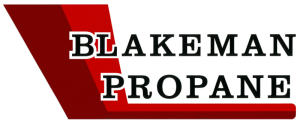The 5 Big Differences Between Static Vs Dynamic Websites
To build a dynamic website, use server-side applied sciences like PHP, Node.js, or Python with a database (e.g., MySQL) to generate content material dynamically. A static web site is a sort of web site that delivers fastened content material to customers, which means the identical content is shown to each customer with none server-side processing or interaction. These often have distinctive necessities and complex functionality, including plugins or custom code. Dynamic web sites have the necessary versatility and class not obtainable from static websites. Dynamic web sites are constructed using server-side programming languages like PHP and are meant for content-heavy websites with a lot of pages.
- For house and private networks, that is perfect because it doesn’t require any person configuration.
- Say for example you needed to show real-time weather info to your customers.
- Static web sites have some exhausting limitations because of the construct course of and the shortage of a server.
- A website is managed by its proprietor that may be a person, firm or a company.
Static Vs Dynamic Web Sites Faq
Dynamic sites are simply scaled to deal with a lot of users and requests through environment friendly database management and server-side optimization techniques. As a outcome VPS/VDS Ubuntu Hosting, server resources have to be continually elevated as the site develops. For example, a VPS server is probably the most simply scalable hosting choice for such sites. Updating the content material of a static website means manually modifying HTML, CSS, and JavaScript files.
Low Fidelity Vs High Fidelity: The Differences Between Design Prototypes
- Dynamic websites process requests and typically pull in content material from an exterior database or a content material administration system (CMS).
- These web sites are easy and straightforward to host but lack interactivity and require guide updates.
- And it’s going to automatically maintain new content material — like weblog posts, occasions, and more — up to date all through your web site.
- If your website frequently adds high quality content material and updates older posts to keep up with the altering world, search engines like google and yahoo may look extra favorably on your web site and transfer it up the search results.
The net browser downloads the online web page from the server and processes the code within the page to render data to the person. Another necessary issue to think about is how incessantly website updates are applied. Since internet browsers and CDN suppliers can cache static sites, they could not replicate adjustments made on the server until cache expiration times have elapsed.
Static pages may be interactive, however when it comes to functionality, dynamic pages positively paved the way. Dynamic pages have boundless functionality—limited only by the complexity of the logic and language wanted to construct them, and the directions needed to deliver content. With a dynamic web site, all your knowledge and content material are organized in a database or backend content management system (CMS), which connects to your web site pages. The method this information is arranged and linked to your site’s design controls how and when its content material is revealed on a web page. In server aspect scripting, the software runs on the server and processing is accomplished within the server then plain pages are despatched to the consumer. Social media platforms like X (formerly Twitter) are prime examples of this capability.
